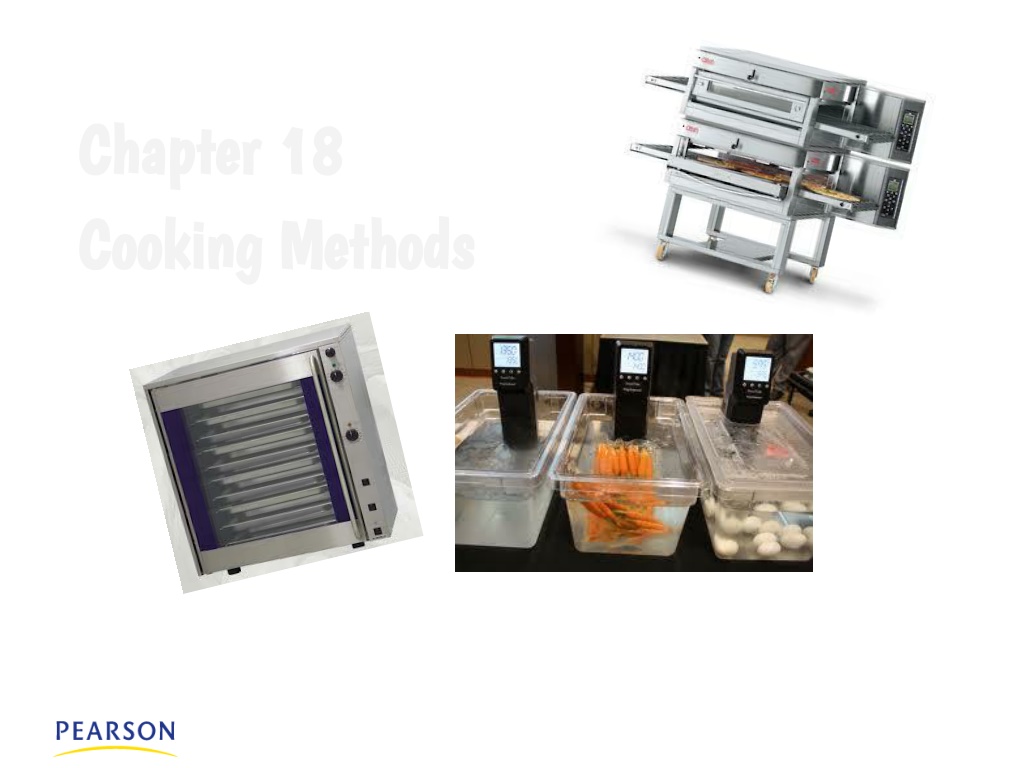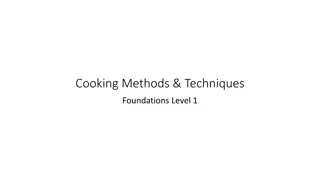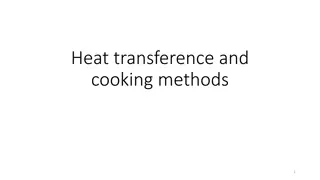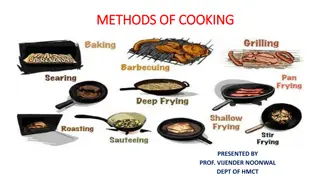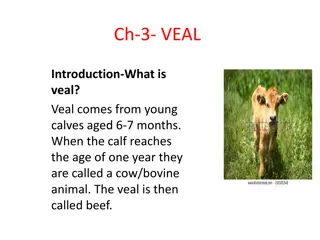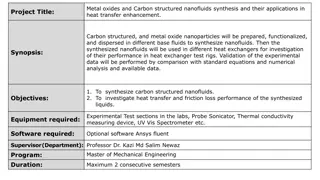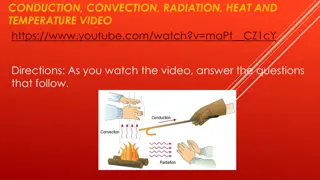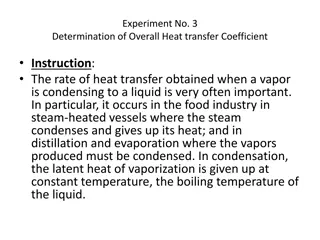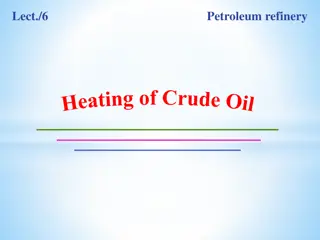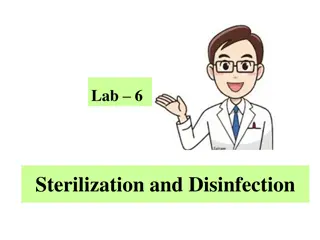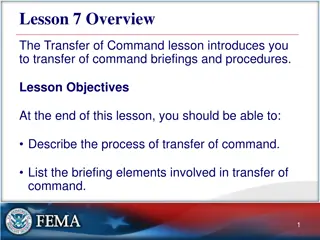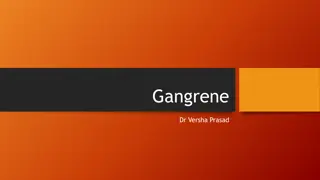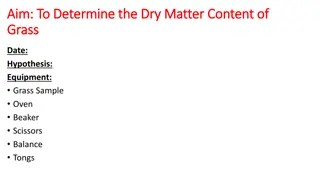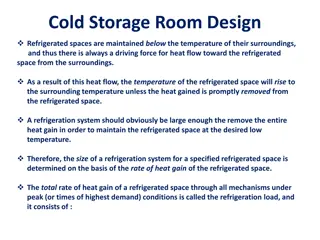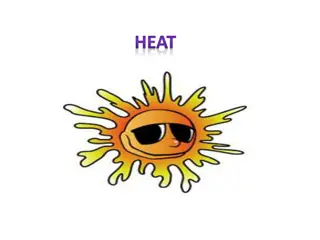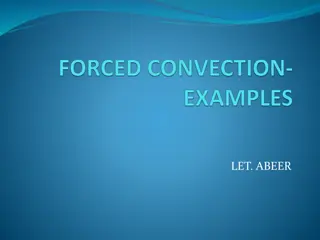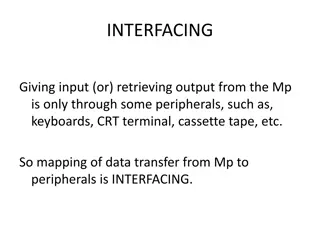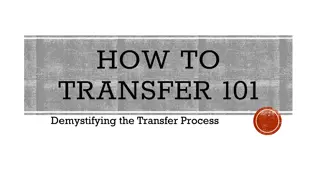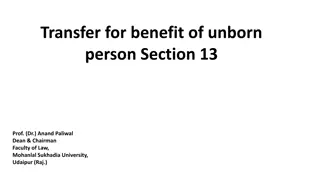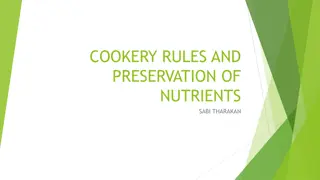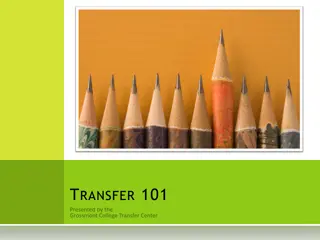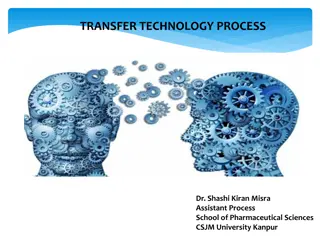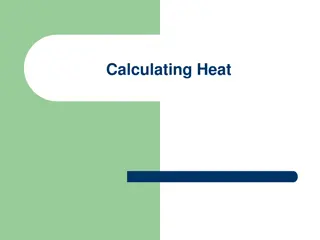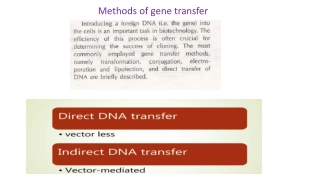Understanding Cooking Methods: Heat Transfer and Dry-Heat Techniques
Learn about heat transfer methods such as conduction, convection, and radiation, along with dry-heat cooking techniques like sautéing, grilling, roasting, and more. Discover how heat energy is applied in various cooking processes to create delicious dishes.
Download Presentation

Please find below an Image/Link to download the presentation.
The content on the website is provided AS IS for your information and personal use only. It may not be sold, licensed, or shared on other websites without obtaining consent from the author. Download presentation by click this link. If you encounter any issues during the download, it is possible that the publisher has removed the file from their server.
E N D
Presentation Transcript
Chapter 18 Chapter 18 Cooking Methods Cooking Methods
Heat Transfer Heat is a type of energy. When two items of different temperatures have contact, energy, in the form of heat, transfers from the warmer item to the cooler until they both reach the same temperature. 3 Main Types 1. Conduction (think conventional oven) 2. Convection 3. Radiation 5.3 Chapter 5 | Kitchen Essentials: Part 2 Equipment and Techniques 2
Heat Transfer Conduction is the transfer of heat from one item to another when the items come into direct contact with each other. Convection is the transfer of heat caused by the movement of molecules (in the air, water, or fat) from a warmer area to a cooler one. 5.3 Chapter 5 | Kitchen Essentials: Part 2 Equipment and Techniques 3
Heat Transfer Radiation does not require physical contact between the heat source and the food being cooked. Instead, heat moves by way of microwave and infrared waves. Infrared heat is created when the heat from a source is absorbed by one material and then radiated out to the food. 5.3 Chapter 5 | Kitchen Essentials: Part 2 Equipment and Techniques 4
Dry-Heat Cooking Methods In dry-heat cooking, food is cooked either by direct heat, like on a grill, or by indirect heat in a closed environment, like in an oven. Saut Stir-Fry Pan-Fry Deep-Fry Broiling Grilling Roast and Bake Griddle 5.3 5
Dry-Heat Cooking Methods Broiling is a rapid cooking method that uses high heat from a source located above the food. Grilling is a very simple dry-heat method that is excellent for cooking smaller pieces of food. Roasting and baking are techniques that cook food by surrounding the items with hot, dry air in the oven. Griddling is cooking a food item on a hot, flat surface (known as a griddle) or in a relatively dry, heavy-bottomed fry pan or cast-iron skillet. 5.3 6
Dry-Heat Cooking Methods The saut ing method cooks food rapidly in a small amount of fat over relatively high heat. T The fat adds to the flavor. Stir-fry is a cooking method closely related to saut . Like saut , it is a quick-cooking, dry-heat method. To pan-fry food, cook it in an oil over less intense heat than that used for saut ing or stir-frying. 5.3 7
Dry-Heat Cooking Methods To deep-fry food, bread or batter coat it, immerse (completely cover) it in hot fat, and fry it until it is done. 5.3 8
Dry-Heat Cooking Methods Deep Frying Terminology Batter: Combines dry and wet ingredients Dry (AP or wheat flour, corn meal, rice flour) + Liquid (beer, milk, wine, water) + Binder (egg) 5.3 9
Dry-Heat Cooking Methods Deep Frying Terminology Breading Same components as batter, but they are not blended together. Standard breading = Seasoned AP flour + egg + buttermilk dip. 5.3 10
Dry-Heat Cooking Methods Deep Frying Terminology 3 Methods 3 Methods (See page. 329 (See page. 329- -330 for details on each method) 330 for details on each method) Swimming Gently drop coated food into hot oil Basket Place in a basket and immerse all at once; lift out the basket all at once Double-Basket Place food in the basket and fit another basket on top of the first 5.3 11
Dry-Heat Cooking Methods Swimming Basket Double-Basket Imagine the basket method (found to left) with an additional basket on top to prevent items from floating to the top 5.3 12
Dry-Heat Cooking Methods Deep Frying Terminology Float of the item: The point when the item rises to the surface of the oil and appears golden brown Indicates doneness Recovery time: The amount of time it takes oil to reheat to the correct cooking temperature once food is added. 5.3 13
Dry-Heat Cooking Methods Deep Frying Terminology Smoking point The temperature at which fats and oils begin to smoke, which means that the fat has begun to break down. 5.3 14
Dry-Heat Cooking Methods Deep Frying Reminder Cooking oil is flammable- be careful and do not combine with water Don t let this be you 5.3 15
Moist-Heat Cooking Methods Moist-heat cooking techniques produce food that is delicately flavored and moist, which can be served as a separate course or used as a sauce base. Simmer Poach Blanch Steam 5.3 Chapter 5 | Kitchen Essentials: Part 2 Equipment and Techniques 16
Moist-Heat Cooking Methods When simmering, completely submerge food in a liquid that is at a constant, moderate temperature. When poaching, cook food between 160 F and 180 F. The surface of the poaching liquid should show some motion, but no air bubbles should break the surface. Shallow Poaching: Last minute cooking method suited to foods cut into portion-sized or smaller pieces. (See pg. 331-332) 5.3 Chapter 5 | Kitchen Essentials: Part 2 Equipment and Techniques 17
Moist-Heat Cooking Methods Blanching is a variation of boiling. When blanching, partially cook food and then finish it later. Steaming is cooking food by surrounding it in steam in a confined space such as a steamer basket, steam cabinet, or combi-oven. Direct contact with the steam cooks the food. 5.3 Chapter 5 | Kitchen Essentials: Part 2 Equipment and Techniques 18
Combination Cooking Methods When the best method for preparing certain food is a combination of dry-heat and moist-heat cooking methods, it is called combination cooking. Braise Stew 5.3 Chapter 5 | Kitchen Essentials: Part 2 Equipment and Techniques 19
Combination Cooking Methods In braising: 1.Sear the food item in hot oil 2.Partially cover it in enough liquid to come halfway up the food item 3.Cover the pot or pan tightly and finish the food slowly in the oven or on the stovetop until it is tender. 5.3 Chapter 5 | Kitchen Essentials: Part 2 Equipment and Techniques 20
Combination Cooking Methods When stewing: 1.Cut the main food item into bite-sized pieces, and either blanch or sear them. 2.Cook the food in oil first, and then add liquid. 3.Stewing requires more liquid than braising. 4.Cover the food completely while it is simmering. 5.3 Chapter 5 | Kitchen Essentials: Part 2 Equipment and Techniques 21
Combination Cooking Methods Types of Stew 1.Blanquette See page. 337 for details on each 2.Bouillabaisse 3.Fricassee 4.Goulash 5.Navarin 6.Ragout 7.Matelote 5.3 22
Sous Vide Sous vide is a method in which food is cooked for a long time, sometimes well over 24 hours. Sous vide is French for under vacuum. Rather than placing food in a slow cooker, cooks place food in airtight plastic bags and then place the bags in water that is hot but well below boiling point. Home Sous Vide Link/Recipes 5.3 Chapter 5 | Kitchen Essentials: Part 2 Equipment and Techniques 23
Microwave Cooking Many foods can be baked or roasted in a microwave oven. Do not give the same results as convection or conventional ovens because they cook food with waves of energy or radiation microwaves rather than with heat. 5.3 Chapter 5 | Kitchen Essentials: Part 2 Equipment and Techniques 24
Section 5.3 Summary Heat is transferred to food in three ways: Conduction Convection Radiation Types of cooking methods include dry-heat cooking, moist-heat cooking, and combination- cooking methods. Broiling, grilling, roasting, baking, saut ing, pan-frying, stir-frying, and deep-frying are kinds of dry-heat cooking. Simmering, poaching, blanching, and steaming are techniques used in moist-heat cooking. Braising and stewing are types of combination cooking. To determine when food is done cooking, identify if the product has its desired texture and minimum internal temperature. 5.3 Chapter 5 | Kitchen Essentials: Part 2 Equipment and Techniques 25
